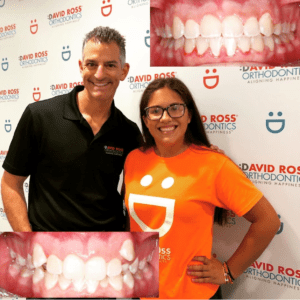About 5% to 12% of people suffer from temporomandibular joint and muscle disorder (TMJD). While this might sound like something your doctor would address, in actuality it falls under ‘airway orthodontics’. In addition to this, conditions such as sleep apnea can also be treated with proper airway treatments. But what exactly are these treatments, and how can they benefit you?
Understanding Airway Orthodontics
Airway orthodontics focuses on clearing airway obstructions that can be caused by improper bite alignment, misaligned teeth, and tongue posture, to name a few. If left untreated, symptoms of TMJD may be experienced. These can include:
- Discomfort in the jaw
- Popping or clicking when speaking or chewing
- Soreness in muscles
- A poor or misaligned bite
- Teeth clenching
- Misaligned and crooked teeth
- Limited opening ability
- Worn teeth due to clenching or grinding
In some instances, straightening teeth can help mitigate some of these issues, depending on their severity. However, other methods of airway orthodontics can focus on correcting narrow palate, crossbites, and crowding that could contribute to airway obstruction, as in some cases of sleep apnea.

The Four Benefits of Airway Orthodontics
Both sleep apnea and TMJD can have serious ramifications if left untreated. Some of the most significant benefits of correcting these issues can include:
- Prevention
If caught early enough, airway orthodontics can help prevent abnormal facial growth, disturbed sleep patterns, and crooked teeth. These treatments can help restore airways, improve facial structure, and restore normal growth and function. If left uncorrected, the entire body can be impacted as sleep apnea, in particular, can even lead to lung disease, congestive heart failure, and high blood pressure, if allowed to progress. - Perfect Posture
Head posture can play a large part in the obstruction of airways, and body posture can suffer as it changes to help open airways. This can lead, not only to spinal problems but also to issues with balance. None of these issues can be solved until the airways are properly opened. The good news is that via non-surgical means, airway orthodontics can usually help improve these issues allowing you to improve your overall posture. - Facial Structure and Growth
The shape of your face can also be impacted by your teeth alignment and airways. If airway orthodontics are implemented early enough, abnormal facial development can be mitigated. This can play a huge part in a child’s self-esteem and can help make them healthier and happier in the long run. As adults, these benefits can still be achieved; however, it’s always recommended to try and fix them as early as possible. This is due to the fact that children’s facial structures are easier to correct as they are still developing. - Integration
Airway orthodontics can cover a wide range of treatments that take into consideration tongue posture, eating, breathing, body posture, sleep habits, and airway obstructions. Taking steps to help improve issues in any of these areas can help give you a healthier life and a more balanced face overall.
Airway orthodontics is key to solving some of the most common airway issues. If left untreated, issues such as sleep apnea and TMJD can go on to cause detrimental problems in the future. If you’re experiencing any of these problems, or have been previously diagnosed, consider speaking with Dr. Ross at David Ross Orthodontics about other options. If you want to start living a healthier and happier life, these airway solutions might be just what the doctor ordered. Talk to Dr. Ross and schedule your free consultation today!



